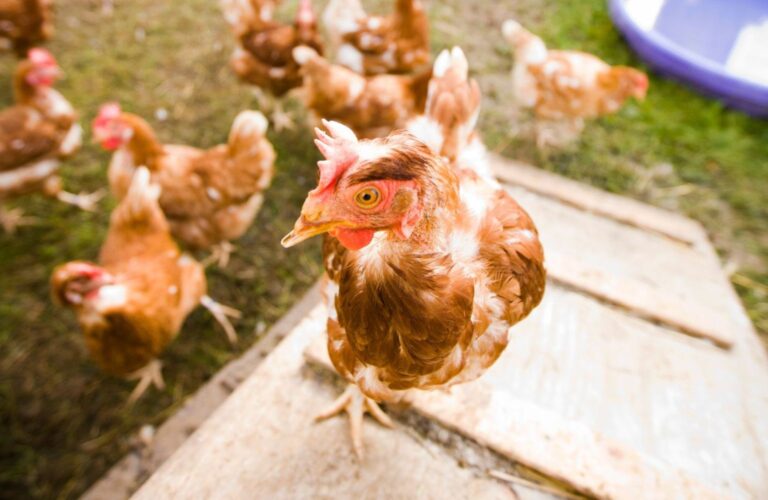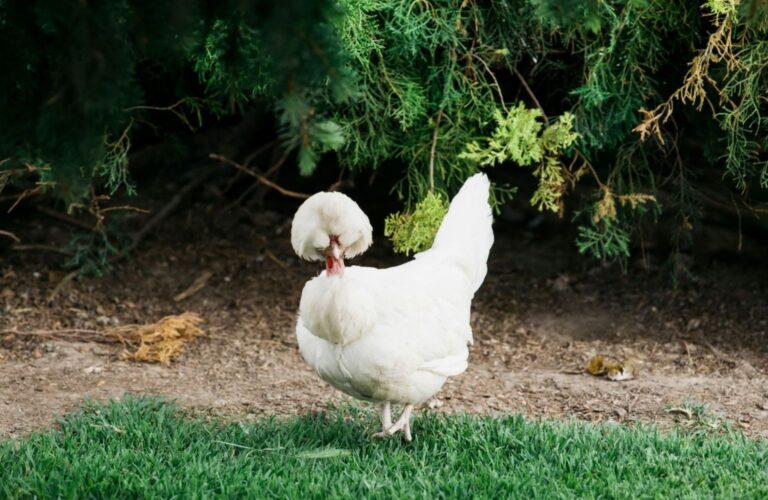The first thing you need when chicks arrive is a safe place for them to grow, such as a brooder box. You must install a brooder lamp to keep your newborn chicks warm. If they are huddling under the lamp, it means they are too cold. If they are forming a ring around the light, then they are too warm.
Want to hear about how some of our customers are doing with their backyard flocks? Read about Matt’s chicken coop in Utah and other chicken coop stories from our customers.
Guide To Raising Chickens- When Chicks Arrive

Assist with the chicks’ needs. You must teach them how to drink water by dipping their beaks into the water, providing plenty of water at a constant pace for the chicks. Clean the area thoroughly where chicks are living. Remember, if food gets wet, it grows mold and won’t be suitable for chicks to consume. Make sure to wash out the water before refilling it- this is very important because many parasites and diseases can spread quickly through contaminated water.
After 8 weeks, the chicks should be grown enough to move out to the great outdoors.
With these simple steps, they will thrive in the flock and be healthy producers for your farm.
Preparing To Raise Chickens
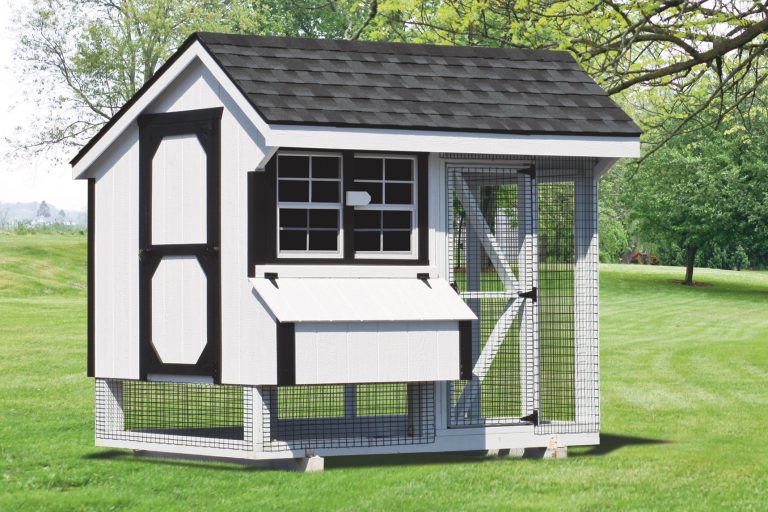
The very first thing in raising chickens is buying or building a wooden chicken coop. The coop must have a feeder and water containers, as well as a nest box for every three chickens. The Chicken coop must be large enough for you to be able to gather the eggs and comfortably shovel manure.
Chickens need water and food daily. Chicken food is usually around $20 for a 50-pound bag. How long the food lasts depends on how many chickens you own.
Hens will lay eggs through spring and summer and into the fall, as they have 12 to 14 hours of daylight. You should expect to collect eggs daily and sometimes even twice a day, all depending on how many hens you have.
You might want to consider keeping multiple chickens because they are sociable birds. Each chicken must have at least 2 square feet of coop floor because they need space, or they will get aggressive. The more space your chickens have, the happier and healthier they will be; overcrowding the chicken coop contributes to feather picking and even disease.
A chicken coop must include a place for the birds to spread their wings, such as a chicken coop run or a spacious backyard. This space must be fenced to keep your chickens in and protected from predators.
Why Should You Raise Chickens?
Many things are appealing about raising chickens in your backyard. The eggs are an obvious benefit of raising chickens, which are better tasting, fresher, and better for cooking than any store-bought eggs. What many don’t realize though is that chickens are great garden companions because they keep an eye out for insects and pests. Chickens can help keep your garden safe while providing you with eggs.
Guide to Raising Chickens- Benefits of Raising Chickens
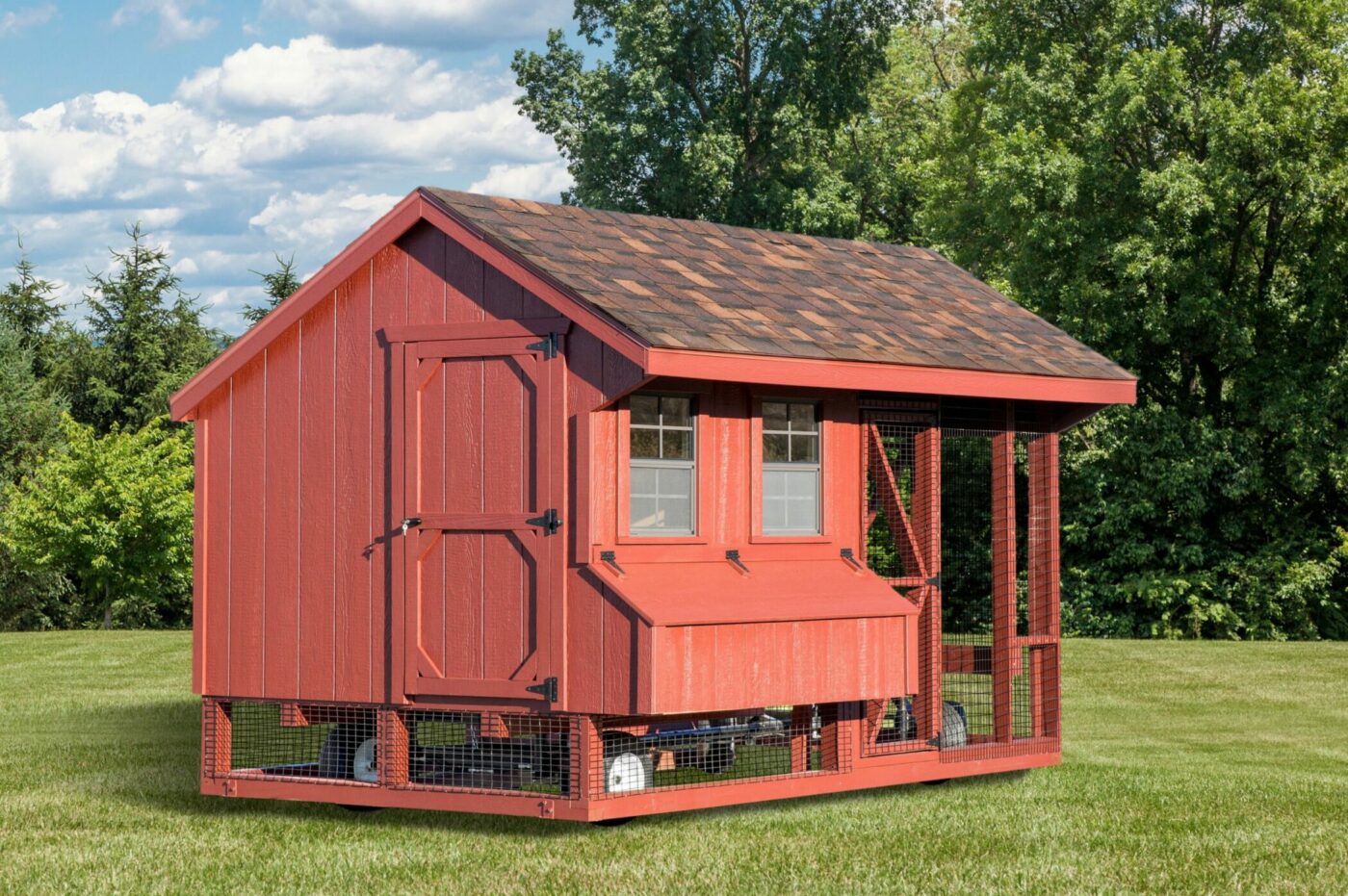
- Chickens are inexpensive and easy to maintain (compared to most other pets)
- They lay fresh eggs, which are delicious and nutritious
- They provide a chemical-free bug and weed control in your garden (saves you money on chemical supplies too)
- They are one of the world’s best fertilizers and will dig over your garden for free
- They can be a pet with a personality that is fun and friendly
- They can be great for creating a hands-on learning experience for children
Are Backyard Chickens Legal In Your City?
Before you start your flock, make sure having chickens is allowed in your city, and make sure you understand the local ordinances applied to your specific area. You need to make sure you are legally allowed to raise chickens before spending time and money preparing for your flock.
- Search the database for local chicken laws and ordinances
- Check the homeowner’s association
- Make sure to check and see If there is a setback such as distance from your coop to property lines, fences, and buildings before building your chicken coop or buying prefab chicken coops.
- Raising chickens is easier if you have a good relationship with your neighbors, and you avoid loud roosters.
Although it’s not mandatory, it would be a good idea to check with your neighbors and see if they are okay with you raising chickens in the backyard. Some people might have a fear of chickens or some sort of allergy that might cause them to react if you grow a flock in your backyard.
Step By Step Guide To Raising Chickens

1. Plan the Size of Your Brood
First things first – before you start investing in any equipment for raising your chickens, you need to decide on the size of your brood. Four chickens is a pretty common size for hobby broods. Get more than that and you better plan on eating a lot of eggs; go with less, and you’ll probably have a coop with space and nesting boxes. If you’re planning on selling eggs commercially or even gifting them to friends and extended family members, bigger might be better.
2. Survey Your Space
Figure out how many chickens your property can accommodate. Check your local ordinance for rules regarding setbacks, sizing, and placement of animal shelters. Verify that both your coop and your run are large enough for your brood, as specified in any chicken-specific ordinances. Then, choose a final location and determine the extent of the entire setup before purchasing or building.
3. Let’s Get Legal
Gather your site and coop plans and submit them to the appropriate authorities. Make sure to include any required fees and applications. It’s best to get all the red tape out of the way at once, so you’ll have smooth sailing once you…
4. Buy Plans or Purchase a Coop
If you’re planning to DIY your coop, you can find tons of great plans at places like The Spruce and Wide Open Pets, or do some research and come up with a unique plan on your own. Whether you’re purchasing a new or used coop, select a model that’s sized to fit your brood. The same goes for your run.
The Hen House Collection has multiple styles of chicken coops such as The Combination Coop, The Quaker, The Tractor, and more. View the full collection of wooden chicken coops to find the right size coop for your backyard.
5. Install Your New Coop and Run
Of course, the easiest route is to buy a finished chicken coop! However, if the enclosures you purchased require assembly, be sure to follow the plan or the manufacturer’s instructions. If you start to find your DIY project getting too overwhelming, try getting in touch with a local expert or fellow chicken enthusiast for help. There are many groups on Facebook and similar platforms dedicated to raising backyard chickens. Never be shy about reaching out to them if you run into difficulties.
6. Collect the Supplies Your Birds Need to Survive
Purchase everything your brood needs beforehand: heat lamp, heat source, brooder, bedding, nesting box(es), feed, and feeding and watering equipment. Leave storage space available near the coop for consumable items, like bedding and feed.
7. Assemble the Nesting Boxes and Brooder
Use a hobbyist-friendly schematic or the included manufacturer instructions to get your brooder and/or nesting boxes set up. If you’re planning to hand-raise chicks, the brooder is a top priority. The chicks will need it right away. Don’t forget about the heat lamp!
8. Set Up the Feeding and Watering Equipment (and Test)
Get your feeding and watering equipment all set and ready to go. Give it a test run to make sure everything is working properly.
9. Buy Your Chickens
OK, we’re finally to the part we’ve all been waiting for! If you’re a long-time chicken enthusiast, chances are you already have a favorite breed that you’re planning on raising. If not, invest some time in researching your options. Several popular backyard chicken breeds include Barnevelder, ISA Brown, Plymouth, and Australorp, but there are plenty of others. Try to choose a breed known for its reliable egg production and resiliency. It’s an added benefit if the breed you select helps with eliminating insects and other pests from your lawn and garden. Try getting advice at your local farm store when selecting a breed.
10. Keep the Coop and Run Clean
Once you have your birds, the real fun starts…and the real work! Draw up a schedule for cleaning your coop and run. A well-designed coop will usually allow for cleaning from the outside, by using plastic trays to catch falling waste and leaving wide openings for sweeping. Use a mask when cleaning, to ward off odor and dust. The latter can cause respiratory issues. Of course, check for and remove eggs every day and replace bedding whenever necessary. It’s worth spending a few extra dollars each month on straw or shavings if it means keeping your chickens healthy and your neighbors happy.
Raise Happy, Healthy, and Productive Chickens!
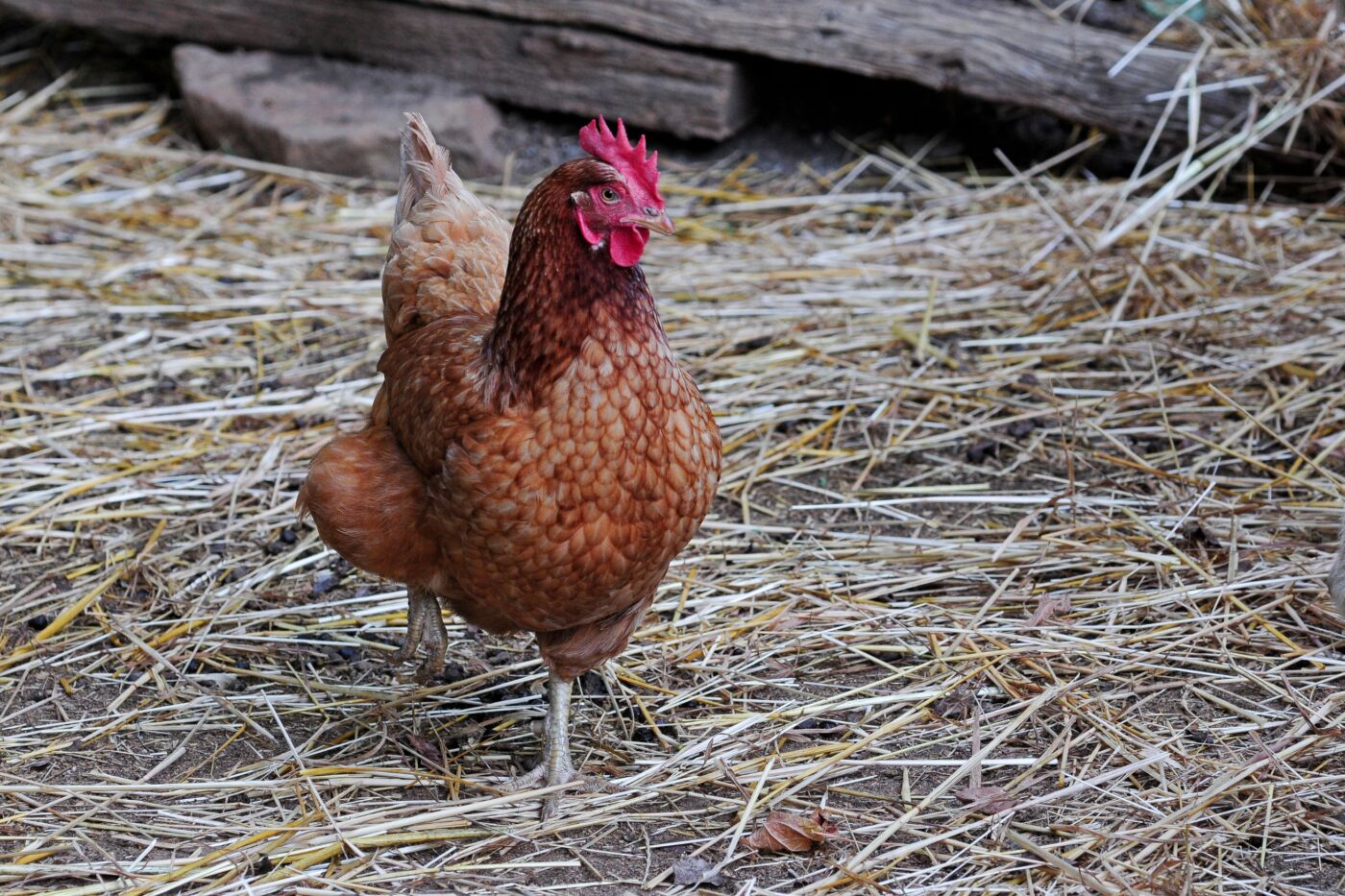
Remember in the guide to raising chickens, a happy and healthy brood means more eggs. While you can’t force your chickens to lay, you can encourage them. Healthy chickens need plenty of water, protein-rich feed (any commercially approved brand should do), calm spaces for roosting, dark and quiet nesting boxes, adequate hygiene, suitable climate control, and plenty of ventilation. With the right care, most breeds of hens remain at peak productivity – laying an egg almost every day – for up to two or three years. A few can even continue laying eggs for close to a decade.


